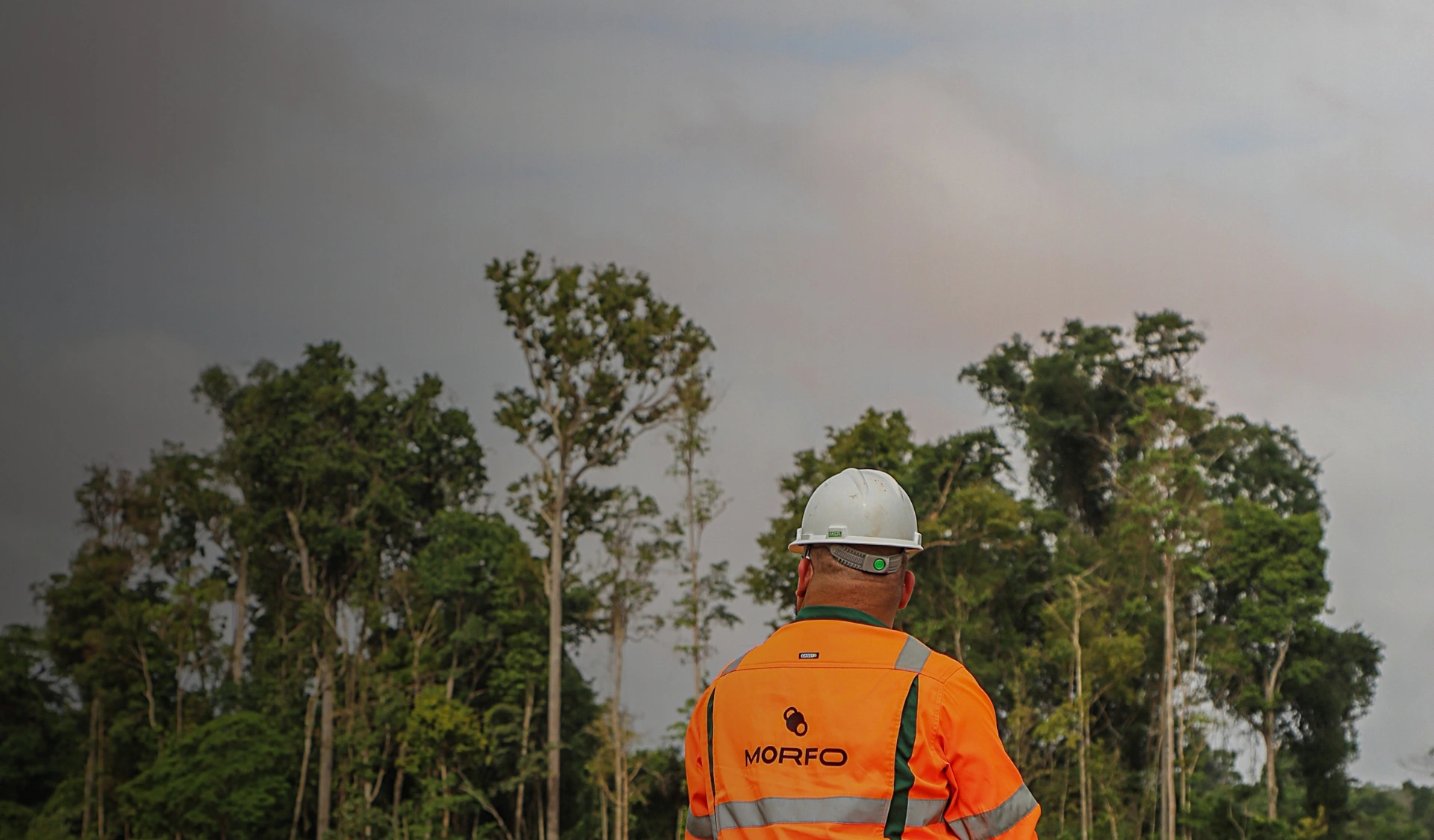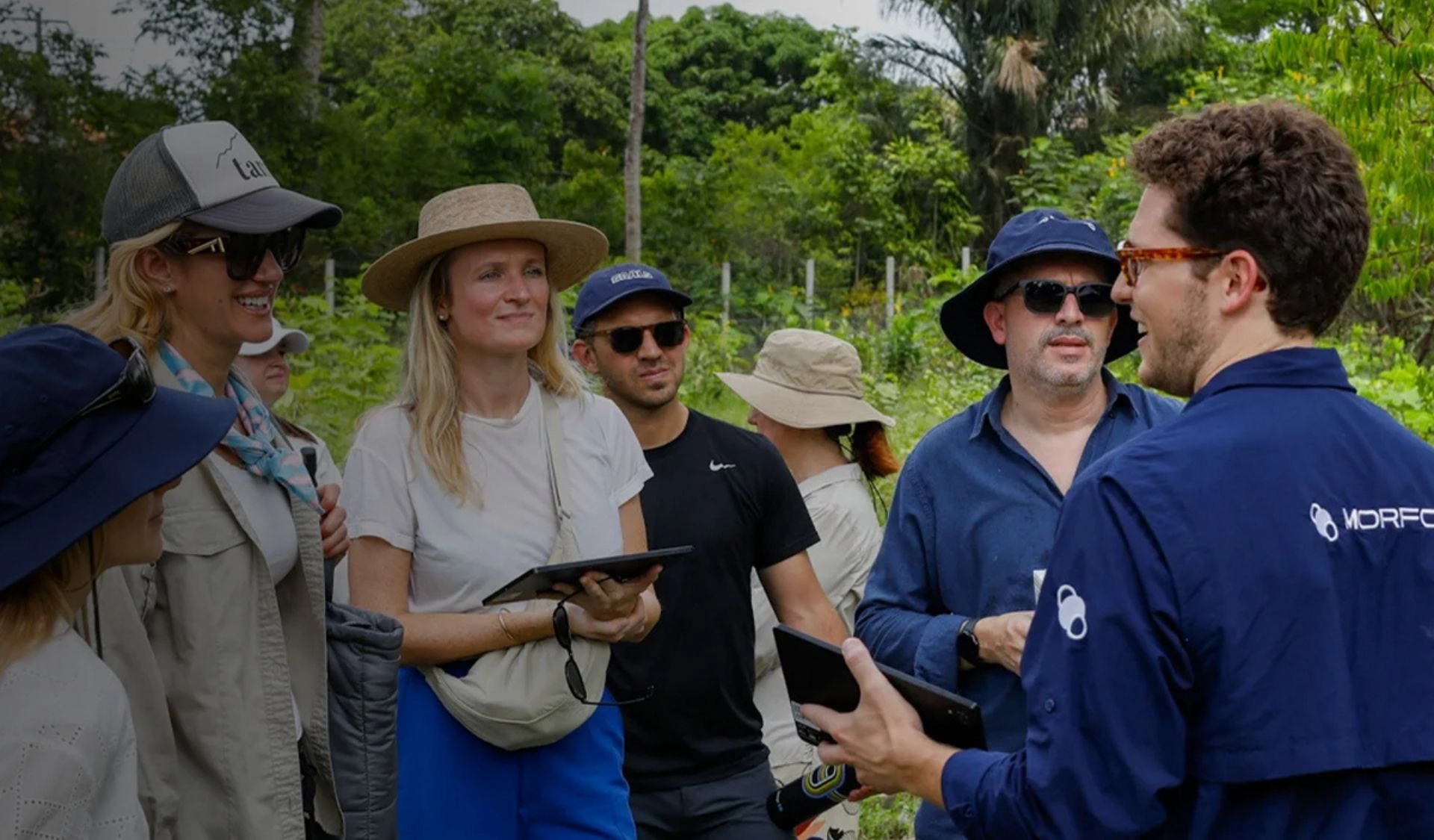The mission of restoring forest ecosystems is more than just planting trees. Restoring forests also means recovering the biodiversity of lost ecosystems, restoring the soil of degraded land, helping to combat climate change and improving the lives of local communities.
When restoring a forest ecosystem, compliance with standards such as those of the Global Reporting Initiative (GRI) is essential to guarantee the success and sustainability of ecological rehabilitation projects.
The Global Reporting Initiative (GRI) is an international organization that develops and promotes sustainable reporting standards, widely used by companies, governments and other organizations to measure and communicate their environmental, social and economic impacts.
Failure to follow established guidelines not only compromises the health and resilience of forest ecosystems, but also risks wasting resources, triggering legal and social conflicts, and undermining long-term sustainability goals.
What are the GRI forest restoration standards?
Forest restoration standards are guidelines or criteria established to ensure effective and sustainable restoration of forest ecosystems. These standards provide a framework for planning, implementing and monitoring restoration activities. They cover a range of aspects, including the following:
1. Soil protection
2. Selecting appropriate tree species and species diversity
3. Restoring biodiversity and ecosystem functions
4. Involvement of local communities, stakeholders and human rights
5. Precise forest monitoring and regular maintenance
In the rest of this article, find out how MORFO, a large-scale ecological restoration solution, complies with the GRI forest restoration standards. By highlighting the importance of these standards and examining their practical application, learn how to maximize the environmental and social impact of your forest restoration actions.
MORFO maximizes its environmental and social impact with GRI forest restoration standards
As a large-scale solution, MORFO rigorously follows forest restoration standards to maximize the chances of success for forest restoration projects, making a significant contribution to the restoration of tropical and subtropical ecosystems and promoting sustainable practices in this field.
MORFO respects each of the GRI standards in the various stages of its solution:
1. Studying soil quality to improve restoration: the MORFO technique
Soils vary in composition and fertility, directly influencing vegetation growth and overall ecosystem health. Studying soil quality prior to ecosystem restoration is essential to protect and/or restore the ecosystem and ensure the long-term success of the project.
In order to restore soil, a preliminary analysis is required to properly plan the restoration approach. At MORFO, we focus on this crucial step. Before any planning or planting, we carry out a diagnosis of the soil in each area, using drone imagery, representative soil samples and analyses in partnership with renowned laboratories, and adapting soil preparation and planting according to the results.
Our in-depth understanding of soils means we can not only plant the right species in the right place, but also improve soil quality over the long term. Soils provide essential nutrients for tree growth and are home to a diversity of micro-organisms beneficial to ecosystem health. By analyzing soils and adapting planting techniques, such as phytoremediation and the use of nutrient-filled seedpods, MORFO maximizes its success rates while helping to preserve biodiversity and improve forest ecosystems.
"Every day, our team works closely with our specialist partners in Brazil and France, as well as with our Data Science team, to enrich our analyses. This enables us to offer diagnosis reports that are constantly evolving, highly accurate and make the most of the data." - Emira Cherif, Scientific Director at MORFO
2. MORFO selects the right species for each part of the site
The choice of appropriate tree species is essential to promote the resilience and biodiversity of restored ecosystems.
MORFO's species selection process is complex and based on several criteria. By combining a large number of factors and using scientific data and in-depth analysis, we identify the most appropriate species for each forest restoration project, and thus meet the GRI 304 standard on Biodiversity and Ecosystem Health.
MORFO pursues constant research and analysis in various laboratories and external laboratories to broaden our knowledge of microbiology, ecology, botany and forestry. This aspect of our mission is extremely important, as it enables us to optimize all aspects of our technology, starting with the quality and selection of our seeds. To be selected, species must meet at least 13 criteria, some mandatory and others not. Discover 5 of these selection criteria used by MORFO.
- First of all, MORFO takes into account the specific ecological context of the region where forest restoration is planned, in order to restore effectively and increase success rates. A site diagnosis is part of the first stage of any project. It allows us to analyze the geography, climate, soil quality and type, and other environmental factors that influence the growth of plant species.
- Preserving and promoting biodiversity are also essential objectives in species selection. At MORFO, we emphasize the promotion of plant species diversity, the long-term monitoring of projects and the involvement of local populations.
- MORFO also assesses the role that each species will play in the restored ecosystem, known as ecosystem function. This can include functions such as nitrogen fixation, regulation of the local climate, provision of habitat for local wildlife etc.
- Selected species must be able to withstand local and future environmental conditions, including disease, pests, drought and flooding. Our seeds are also encapsulated in seed capsules, which contain all the biological and nutritional elements needed for long-term ecological restoration by protecting and nourishing the seeds as they germinate. Drones are then used to disperse and plant the capsules on site.
- MORFO also takes into account current and future human land use when selecting species for planting. We ensure that the collection of timber, medicinal plants, flowers or fruit is taken into account when rebuilding our catalog of species to be planted. This maximizes the positive impact of forest restoration on local communities and their economies, while preserving biodiversity.
3. Between 10 and 30 species planted to restore all the ecosystem functions of degraded forests
Ecological restoration is much more than just planting trees. It's about revitalizing the forest's ecosystem functions, increasing carbon sequestration, water cycle regulation and biodiversity. Complete restoration not only ensures better long-term survival and return on investment, it also meets GRI 305 and 306 requirements for Climate Change Mitigation and Sustainable Resource Use.
MORFO's scientific expertise has enabled us to create a catalog of over 300 local plant species, currently being analyzed or already planted. In each of our forest restoration projects, we plant a minimum of 10 to 30 species, all adapted to the local environment, plant interactions, the needs of each project area and of local communities, and so on.
"MORFO differentiates itself by adopting a "smart planting" method, which is quite distinct from conventional approaches. Tests are conducted to prove the effectiveness of these innovative methods, guaranteeing a measurable positive impact on restored ecosystems." - Adrien Pages, CEO of MORFO
4. MORFO collaborates with local communities and stakeholders throughout the duration of the project.
Involving local communities is essential to ensure the sustainability of forest restoration projects. In a study published in BioScience by Sara Löfqvist and colleagues from ETH Zurich, it was noted that the effectiveness of ecosystem restoration projects can be improved by taking social and equity issues into account.
That's why at MORFO we involve local communities in the process of collecting, preparing and planting seeds, and pay them for their work. By including local people in project planning and management, MORFO ensures that it complies with GRI 102 Stakeholder Engagement standards. To date, more than 1,000 people have worked with MORFO on our projects around the world. It's worth noting that not only do we fund the collectors, but we also train them free of charge in seed preparation and storage, a skill they can then use in future contracts with other players or organizations.
Our ecological restoration project in the state of Rio de Janeiro
As part of the Miguel Pereira project in the north of Rio de Janeiro state, MORFO carried out ecological restoration in partnership with ITPA. With the help of this organization, local communities participated in replanting 25% of the 50-hectare area. The remaining 75% was planted at high speed, by drone. This is just one of dozens of MORFO projects helping to restore the Atlantic Forest, essential to local life in Rio de Janeiro.
Our partnerships with local associations promote equitable economic redistribution, supporting the local economy. We have a mutually beneficial relationship with these communities, where their valuable input enriches our research and knowledge of ecosystems.
By integrating local stakeholders, MORFO works to protect the environment and improve communities' quality of life. We also gather feedback and expectations from local populations, and adapt our projects accordingly. By placing human rights at the heart of project planning and implementation, our actions contribute to the well-being of local populations and comply with GRI 412 standards.
"Reforestation is more than just planting trees, it's guaranteeing a better world for future generations." - Mauricio Ruiz, founder of ITPA
5. Precise long-term monitoring maximizes the chances of success of the ecological restoration project.
Regular monitoring and maintenance are necessary to ensure the long-term success of forest restoration projects. Rigorous forest monitoring not only verifies the success of the project, but also generates essential data to improve future ecological restoration initiatives.
MORFO accurately tracks the evolution of each plantation area of any project over the long term, in line with GRI 103 Sustainability Reporting standards. Using tools such as drone and satellite imagery, artificial intelligence, and regular field analysis, we ensure comprehensive monitoring of key parameters (biomass growth, biodiversity index, carbon stocks, etc.) over a period ranging from 5 to 30 years.
MORFO forest monitoring is based on advanced technology and close collaboration with local communities. Through an interactive dashboard our customers can follow the progress of forest restoration projects live and at any time. This transparent, participatory approach ensures effective management of restored ecosystems, while providing valuable information to all stakeholders to guide future decisions.








